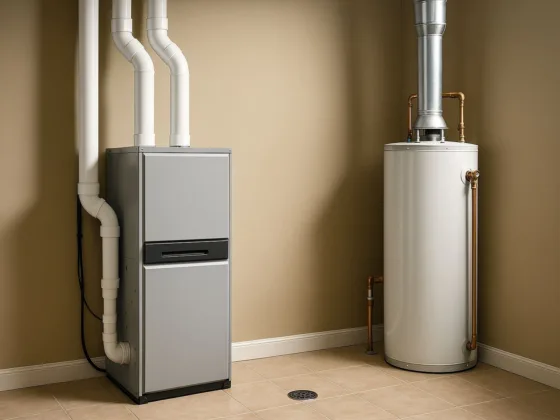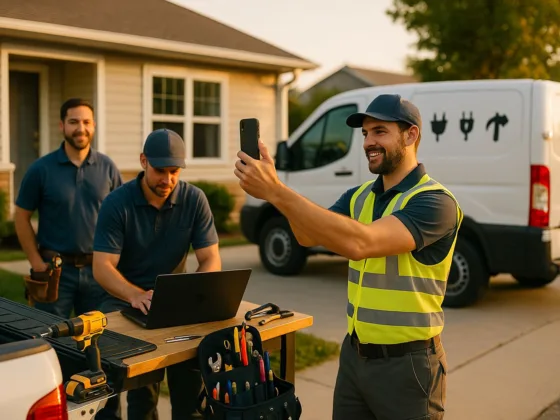Table of Contents Show
Quick Answer: In Louisiana, compare installers on local experience, hurricane-grade engineering (ASCE 7/LA code), and net billing math at your exact utility’s credit rate. As a starting point, request quotes from several providers and benchmark against best solar companies in Louisiana.
TL;DR: Size your system for self-consumption (Louisiana uses net billing with low export credits), insist on ASCE 7 hurricane-grade mounting (PE-stamped where required), and compare total ownership cost (equipment + workmanship + service). A 10–20 kWh battery with a critical-loads subpanel keeps essentials running during outages.
Louisiana gets plenty of sun—and storms. That mix makes picking the right installer less about brand names and more about local code savvy, wind-load engineering, and utility-specific savings modeling. Use the checklist and glossary below to hire confidently.
Why Solar in Louisiana (Now)
Electric rates are volatile, outages aren’t rare, and today’s net billing credits mean the best returns come from right-sizing your system, tuning self-use, and—optionally—adding storage for resilience during hurricane season.
Louisiana Fast Facts (2025)
- Credits & policy: Most LA customers have net billing (exports credited at an avoided-cost rate). Entergy Louisiana lists an avoided-cost credit around 2.6¢/kWh as of Apr 2025 (verify current rate on your bill/utility page).
- New Orleans exception: Entergy New Orleans supports a net-metering program with defined system size limits; always confirm at your exact service address.
- Permitting (NOLA): As of Mar 1, 2025, rooftop PV permits route through SolarAPP+ via OneStop—installers must complete SolarAPP+ training.
- Federal tax credit: The Residential Clean Energy Credit is 30% for systems placed in service 2022–2032, then steps down to 26% (2033) and 22% (2034).
Louisiana Solar Provider Checklist (Closes Common Content Gaps)
| Item | What “Good” Looks Like in LA | Why It Matters |
|---|---|---|
| Local licensing + NABCEP | LA contractor license; team includes NABCEP PV Associate / PVIP. | Signals repeatable quality & safe practices. |
| Hurricane-grade engineering | PE-stamped racking calcs to ASCE 7; tested uplift; sealed penetrations. | Meets LA Uniform Construction Code & wind-load requirements. |
| Utility-accurate savings | Proposal models your utility’s avoided-cost export rate + realistic degradation/soiling. | Avoids overpromising; optimizes self-use/battery sizing. |
| Battery & outage plan | Critical-loads subpanel; 10–20 kWh starter size with expandability. | Keeps essentials on during storms and poor grid days. |
| Permits & interconnection | Handles electrical permits (e.g., NOLA via SolarAPP+) and PTO with utility. | Prevents paperwork delays. |
| Transparent pricing | No hidden dealer fees; clean cash vs. loan vs. lease comparison; clear change orders. | Enables apples-to-apples quotes. |
| Warranties you can use | 25-yr panel; 10–25-yr inverter/optimizer; 10-yr workmanship; responsive service SLA. | Total cost over time, not just sticker price. |
| Financial stability | Healthy balance sheet; escrow for roof/structural work; 3–5 Louisiana references >24 months old. | Reduces long-term service risk. |
How to Compare Solar Companies in Louisiana
Shortlist three to five installers (start with a couple of regional leaders such as some of the leading providers in Louisiana), then compare:
- Design fit: Shade analysis, panel layout, inverter choice (string vs. micro), battery integration, critter guards, and monitoring.
- Code + wind: Do they cite ASCE 7 loads and Louisiana’s 2021 I-Codes? Ask for a PE stamp on racking if required by AHJ.
- Net-billing math: Are exports modeled at your utility’s current avoided-cost rate and time windows?
- Timeline realism: Permits, interconnection, material lead times, and any roof work baked into the schedule.
Smart Questions to Ask (Louisiana Edition)
- Which parishes/cities have you installed in most recently, and may I see PE-stamped plans?
- How do you model Entergy/SWEPCO export credits for my address, and what self-consumption strategies do you recommend?
- If I’m in Orleans Parish, do you handle SolarAPP+ permitting and inspections? What are the fees?
- What roof work (if any) do you require before install, and who is liable for penetrations/leaks after storms?
- Please show line-item pricing and any dealer fees. Can you quote a cash price for comparison?
Right-Sizing, Batteries & Payback in LA
Because most Louisiana customers get net billing, oversized arrays give diminishing returns. Many homeowners pair a well-sized array with a 10–20 kWh battery and a critical-loads subpanel (fridge, lights, outlets, Wi-Fi, small A/C or window unit) to ride through outages. Monitoring and tuning self-use can materially improve savings over time.
Further reading on DreamlandsDesign: Solar panel cost basics • Inverter types explained • Monitoring metrics for better ROI
Scam Watch: Red Flags
- “We credit you at the full retail rate.” → In most of LA, exports earn avoided-cost credits, not retail.
- “Act now—no-money-down and no dealer fee.” → Many “low-APR” loans bury dealer fees in system price.
- “No battery needed for outages.” → Without storage, PV shuts down during a grid outage for safety.
FAQs (Louisiana)
Is net metering available in Louisiana?
Statewide, Louisiana largely uses net billing. That means exported kWh are credited at an avoided-cost rate (a few cents per kWh). Entergy New Orleans operates a net-metering program with defined size limits—verify at your address and review current tariffs.
Do I still get the 30% federal tax credit?
Yes. The Residential Clean Energy Credit is 30% for systems placed in service 2022–2032, then steps down to 26% in 2033 and 22% in 2034 (no credit after 2034 under current law).
Do I need a battery for hurricanes?
You don’t need one, but a 10–20 kWh battery with a critical-loads panel keeps essentials powered during outages and helps you self-consume more solar under net billing.
Mini-Glossary (Plain English)
- Net billing: Exports to the grid earn a low “avoided-cost” credit; you get the most value by using your own solar in real time.
- Net metering (NEM): Legacy policy that credited exports at (about) the retail rate. New Orleans has defined NEM rules; many other LA customers are on net billing.
- ASCE 7 / hurricane-grade mounting: Engineering standard for wind loads. Racking/fasteners must be sized and sealed to withstand Gulf Coast storms.
- PE-stamped plans: Drawings reviewed and stamped by a Professional Engineer—often required by AHJs for wind/uplift compliance.
- PTO (permission to operate): Utility approval to interconnect and export after inspections.
- NABCEP PVIP: A top-tier solar certification signaling advanced installer/design expertise.
- Avoided-cost rate: The utility’s buyback rate (usually much lower than what you pay for power).
- Critical-loads subpanel: A small panel that powers only must-have circuits (fridge, lights, Wi-Fi, outlets) from the battery during an outage.
Bottom Line
In Louisiana, the right installer is the one who masters local codes and wind loads, models your utility’s actual credits, and stands behind clear warranties. Compare quotes and service promises—then choose a partner you’ll trust for the next 25 years.
Author & Technical Reviewer
- Author: Perla Irish — Home Energy & Remodel Editor at DreamlandsDesign. Focus areas: residential solar, electrification, and hurricane-resilient retrofits for Gulf Coast homes. Coordinates fact-checks with NABCEP-certified installers and licensed professionals. Editorial standards.
- Reviewed by: Jeffrey (Jeff) Cantin, President at Solar Alternatives — NABCEP PV & Thermal Certified; statewide Master Electrical Licenses; B.S. Electrical Engineering (Rice). LinkedIn.
Technical review completed: Nov 5, 2025.
Reviewer affiliation note: Our technical reviewer leads a Louisiana solar firm; the review focused on code compliance, engineering accuracy, and consumer protections. No compensation influenced the editorial recommendations.
Sources (authoritative)
- IRS — Residential Clean Energy Credit (30% through 2032; step down after)
- Entergy Louisiana — Net metering / distributed generation (avoided-cost buyback)
- DSIRE — City of New Orleans Net Metering • City of New Orleans — Solar Permitting (SolarAPP+)









